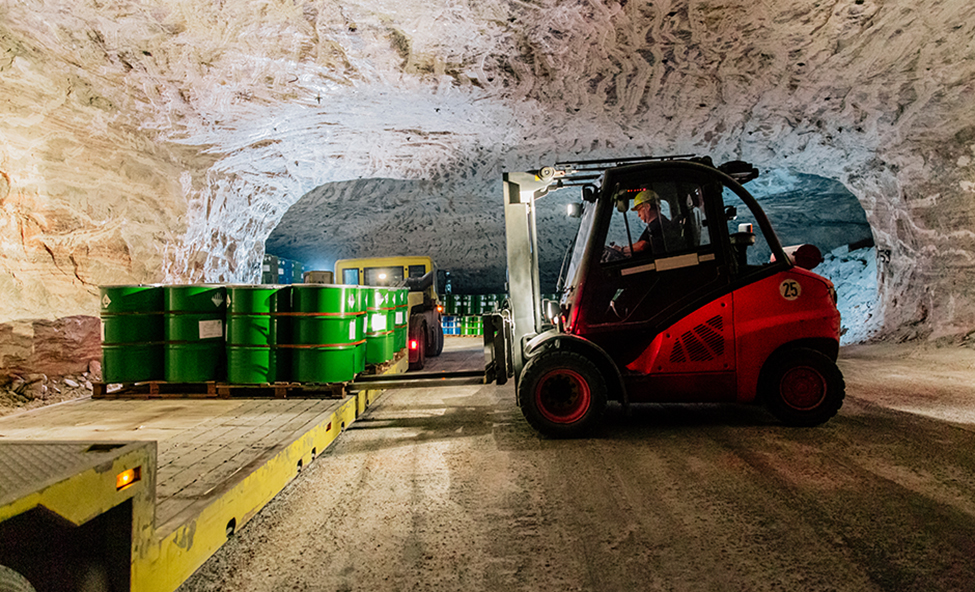UNDERGROUND DISPOSAL: MAINTENANCE-FREE AND SAFELY OVER THE LONG TERM
Your waste is best off in the underground landfill sites. There is no better solution. In decommissioned mining claims, at depths of 800 meters, the natural geological conditions offer the safest place for hazardous substances. Where else, if not here?
We accept these waste residues and much more
Underground landfill sites in Hessen and Saxony-Anhalt are the best choice for hazardous waste. The most hazardous waste residues that we accept include, for example:
- Hazardous fibre waste
- Electroplating waste
- Hardening salt residues
- Arson, cyanide or mercury-containing waste
- Residue from the steel and metal industry
- Filtration residue
- Contaminated soil and building rubble
- Evaporation residue
- Filter dust

The contaminated substances are dumped in disused sections of the potash mines, embedded in thick layers of salt well below the groundwater table (level). Therefore, people and the environment are also protected in the future.
Geological factors as a natural barrier
Geological section of the underground landfill site (example illustration)

Come to us with your waste
Your waste can be packed into barrels, big bags or steel sheet containers. They reach the underground landfill sites of K+S by lorry or train. Unloading of sea containers is also possible in Zielitz. In Herfa-Neurode we also accept dusty waste delivered in silo lorries. They are placed on site in big bags.
Following high safety standards, all specifications are checked during the acceptance stage. Staff on site check the completeness of accompanying documents, declaration and packaging. Before the waste is landfilled underground, a retention sample is extracted for storage.
The waste is transported many hundred metres below ground using a winding shaft. Special-purpose vehicles bring them to the storage location underground, which is often several kilometres away from the shaft. For safety reasons, different substance groups are also stored in different areas.
At its destination, the waste is stacked in storage chambers. The multi-barrier system applies to landfilling: If a storage chamber is filled, it is sealed off with walls or salt walls.
In the underground landfill sites of K+S strict regulations are followed. The storage location and time as well as the amount and condition of all waste are documented. In addition, a retention sample is stored underground in the specimen archive. This makes it possible to track where the substances are stored at all times.






